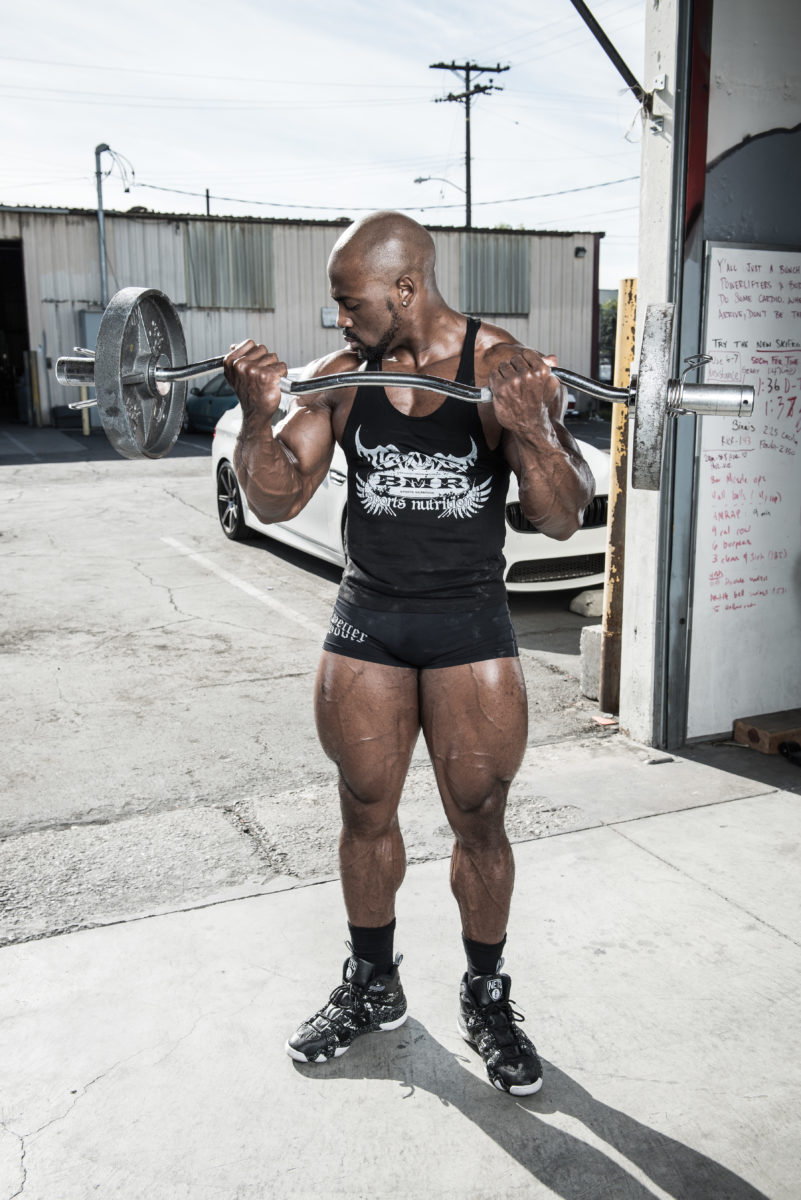

This relatively painful intensity technique can lead to rapid gains in size.
By Vince Del Monte
This month I want to talk about a technique I’m currently employing inside my eight-week training cycle that has me doing—wait for it—just one all-out set per workout, per bodypart.
The technique is called “mechanical advantage drop sets” or MADS (which is a great acronym I thought I invented until I did a quick Google search). Before diving into MADS, let’s define drop sets so we’re on the same page. A drop set is when you perform a given exercise to the point of concentric failure, and then change a variable in a way that allows you to extend the set into what I call “The Hurt Box.”
You are likely familiar with drop sets that include decreasing the weight once you hit fatigue so that you can chase some extra reps with a lighter load. This is a good technique in my opinion, but not a great technique. Drop sets are also known as “strip sets,” and it’s likely one of the first mass-gaining techniques you’ve experimented with during your early days of your muscle-building journey. However, as the years go on, the “gains train” starts to slow down and we start looking for more advanced methods to continue our quest for a bigger and stronger body.
That’s where MADS comes in, and in a moment I’ll give you my own MADS upper-body training program so you can put this bad boy to the test. The “mechanical” in MADS refers to a change in body position, which applies to increasing or decreasing leverage. For instance, you’ve likely noticed it’s easier to do a squat with your feet wider versus narrower. It’s easier to perform a bench press on a decline instead of incline. It’s easier to perform a narrow-grip underhand lat pulldown versus a wide-grip overhand lat pulldown. With each of these examples, muscular leverage changes unfavorably, so the exercise becomes harder.
To set up MADS properly, you would always give yourself the least amount of leverage or “advantage” before fatigue sets it, then you would give your body more leverage and “advantage” to recruit new muscle fibers that weakened in the previous position, further extending beyond the initial point of fatigue.
Here are some examples from my own eight-week training cycle:
Vertical Pull Mechanical Advantage Drop Set:
1. Wide pronated lat pulldown
2. Mid-pronated lat pulldown
3. Narrow supinated lat pulldown
Chest Mechanical Advantage Drop Set:
1. 45-degree incline dumbbell press
2. 30-degree incline dumbbell press
3. Flat dumbbell press
Horizontal Pull Mechanical Advantage Drop Set:
1. Mid-pronated low cable row
2. Mid-supinated low cable row
3. Narrow neutral low cable row
Shoulder Mechanical Advantage Drop Set:
1. Dumbbell lateral raise
2. Bent-over dumbbell lateral raise
3. Dumbbell upright row
Biceps Mechanical Advantage Drop Set:
1. Mid-pronated grip EZ-bar spider curl
2. Mid-supinated grip EZ-bar spider curl
3. Standing EZ-bar curl
Triceps Mechanical Advantage Drop Set:
1. EZ-bar triceps extension to top of head
2. EZ-bar triceps extension to chin
3. EZ-bar close-grip bench press
You may be asking, “Are MADS better than traditional drop sets? In my opinion, for natural lifters, the answer is yes. And this comes back to one word: load.
With traditional drop sets you are decreasing the load, but with MADS, the load stays the same the entire time. In my experience, people get better gains over time when they’re working with challenging loads and avoiding “junk volume” that can occur with lighter weights. With MADS, you’re consistently working with challenging weight and recruiting the maximal amount of muscle fibers with each mechanical drop set.
While this may look easy on paper, it’s actually quite advanced. It hurts, and it’s one of the most efficient and effective way to challenge your body and force it into growth without the excessive volume promoted by drug users with enhanced recovery abilities. Next month I’ll show you how to do MADS for the lower body. IM

Taking Mechanical Advantage
Here is basic eight-week program that incorporates MADS. When you do this workout, you are starting each exercise in the most mechanically advantageous position, which basically means where you are strongest. And although you will take the set to failure, you’ll find more “gas in the tank” when you give yourself a greater mechanical advantage from drop to drop, which is a very efficient and effective way to invest (not spend) your time in the gym. I’ve also found these brief but intense workouts, especially, work wonders for natural athletes who are not chemically enhanced because they stimulate the muscles rather than annihilate them.
Week 1: 1 x 15 + Failure + Failure
Week 2: 1 x 12 + Failure + Failure
Week 3: 1 x 10 + Failure + Failure
Week 4: 1 x 8 + Failure + Failure
Week 5: 1 x 15 + Failure + Failure
Week 6: 1 x 12 + Failure + Failure
Week 7:1 x 10 + Failure + Failure
Week 8: 1 x 8 + Failure + Failure
• Take multiple sets to warm up to find your first work set. To make this low-volume approach work, you must select a load that gets you to failure so that you’re unable to do a 16th rep even if your life depended on it. If you think you can do a second set, then you didn’t go hard enough, I don’t care how tough you are. When this is done properly, you will be thankful there is only one all-out set per bodypart.
• Take 10 seconds in between each position.
• Increase weight every week and use more weight in the last four weeks than you did in the first four weeks.






















You must be logged in to post a comment Login